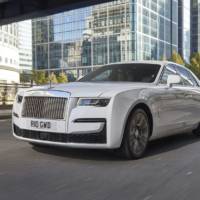Hyundai is expanding its N performance division with the launch of the new Kona N model. The company’s first high-performance SUV will be available with an eight-speed wet-type Dual-Clutch Transmission, known as N DCT, providing high-performance features for even more fun-to-drive.
N DCT provides the engaging experience of a sequential gearbox with the convenience of an automatic transmission.
N DCT is the enhanced version of the company’s in-house developed 8DCT, an eight-speed wet-type dual-clutch transmission. To make it suitable for N models, the 8DCT received improvements in durability, allowing it to handle the demands of high-performance vehicles. With the 2.0-litre T-GDI engine, it gives the best performance by applying unique gear ratios. The transmission control unit is calibrated for N, resulting in faster shifting and enabling a range of exclusive driving features.
Hyundai’s N DCT technology was first offered in the VELOSTER N, a model available in North America and Korea, and came to the new i30 N as a result of the valuable feedback of the Hyundai N community. In the case of the all-new KONA N, Hyundai has specified all units with N DCT.
Clients will appreciate the 2.0 T‑GDI engine with 280 PS. It features a flat power characteristic that provides more torque and power at mid and high-range RPM’s. The new higher amount of torque is utilising more of the engine’s potential in everyday driving situations. The new engine power characteristic also improves acceleration in the mid- and high-speed range and delivers a consistently high performance, even in a variety of outside temperature conditions.
The iconic Nürburgring racetrack is known as one of the world’s most challenging racetracks. With 73 corners and 20.8 kilometres of tarmac, it is also a motorsport complex and home to Hyundai’s own testing centre. Hyundai’s accelerated durability tests are conducted there. Each car taking part in these tests laps the Nürburgring at least 480 times (10,000 km) in both dry and wet conditions, simulating up to 180,000 km of severe driving in just five to six weeks. The constant combination of hard acceleration, rapid deceleration, and heavy cornering push the vehicles to their limits, and the variable surfaces and camber ensure top performance even in adverse conditions.



